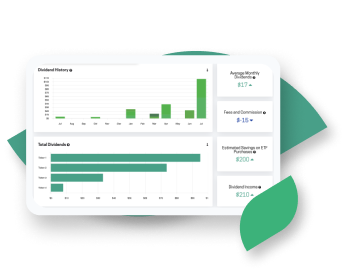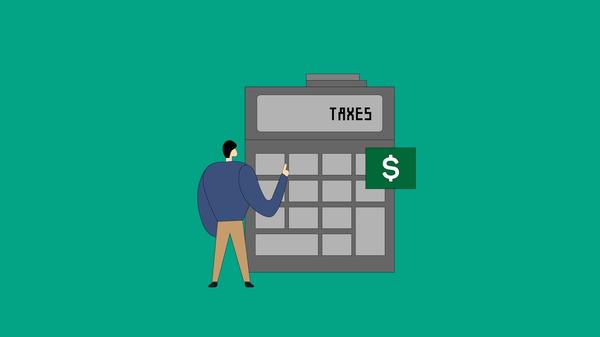XBAL is one of BlackRock's one-fund ETF with $0.5B of assets under management (AUM). XBAL is their “Balanced ETF Portfolio''. With a blend of 60% equity and 40% bonds, it offers long-term portfolio growth with medium-low risk level.
In this article, we’ll review XBAL and discuss its pros and cons.
What are one-fund ETFs?
Also called self-rebalancing or asset allocation ETFs, one-fund ETFs are comprehensive portfolios that are rebalanced automatically to maintain their allocation and risk/return goals. They come in various blends of allocations, ranging from long-term options with 100% equity to conservative portfolios of mostly bonds.
What is XBAL?
XBAL is BlackRock’s Balanced ETF Portfolio. It consists of about 60% equities and 40% bonds. In practice, XBAL is a portfolio ETF comprised of other BlackRock ETFs with the following allocation:
XBAL Holdings
As of February 2, 2021
| Ticker | Security Name | Asset Class | Percentage |
|---|---|---|---|
| ITOT | ISHARES CORE S&P TOTAL U.S. STOCK | US Stock | 29.98% |
| XBB | XBB ISHS CORE CAD UNIV BND IDX ETF (CA) | Canadian Bonds | 23.02% |
| XIC | ISHARES S&P/TSX CAPPED COMPOSITE | Canadian Stocks | 15.16% |
| XEF | ISHARES MSCI EAFE IMI INDEX | Developed Markets Stocks | 15.09% |
| XSH | iShares Core CAD ST Cor Bd Index | Short-Term Canadian Corporate Bonds | 6.02% |
| USIG | ISHARES BROAD USD INVESTMENT G | US Corporate Bonds | 3.69% |
| GOVT | ISHARES US TREASURY BOND ETF | US Government Bonds | 3.66% |
| IEMG | ISHARES CORE MSCI EMERGING MARKETS | Emerging Market Stocks | 3.27% |
| CAD | CAD CASH | Cash or Cash Derivatives | 0.09% |
| USD | USD CASH | Cash or Cash Derivatives | 0.03% |
XBAL is geographically diverse with its top 95% of net assets with the following allocation:
XBAL Geographical Allocation
As of February 2, 2021
| Country | Percentage |
|---|---|
| Canada | 44.20% |
| United States | 37.33% |
| Japan | 3.92% |
| United Kingdom | 2.18% |
| France | 1.44% |
| Switzerland | 1.33% |
| Germany | 1.32% |
| China | 1.23% |
| Australia | 1.12% |
| Sweden | 0.61% |
| Netherlands | 0.57% |
Even though BlackRock reports performance since 2007 for XBAL, the current structure of the fund is relatively new. The fund changed their mandate entirely in December 2018, so performance before that date doesn’t mean much to current investors.
XBAL showed a return of 15.19% in 2019 and an average annual return of 10.58% in 2020.
XBAL's distribution yield is currently 2.56%. Since XBAL is a mix of stocks and bonds, this includes both stock dividends and bond interest payments.
XBAL has a 0.20% Management Expense Ratio (MER).
The benefits
XBAL’s main plus, as other one-fund ETFs, is its simplicity. There’s very limited portfolio management with these funds. You just continuously buy more of the fund and your portfolio stays balanced.
XBAL is also well diversified, which limits investment risks. XBAL is also one of the cheapest options for all-in-one solutions, especially compared to mutual funds and robo-advisors.
The drawbacks
XBAL seems like the perfect option, right? Well, there are also things you should consider before making the jump. The main one is that it may be better for some investors to hold the underlying ETFs of XBAL rather than XBAL itself. Here’s why:
1. It’s much cheaper
As mentioned earlier, XBAL has a MER of 0.20%. Here’s the breakdown of your MER if you were to hold the same allocation of ETFs as XBAL individually:
XBAL MER
As of February 2, 2021
| Ticker | Security Name | Percentage | MER |
|---|---|---|---|
| ITOT | ISHARES CORE S&P TOTAL U.S. STOCK | 29.98% | 0.03% |
| XBB | XBB ISHS CORE CAD UNIV BND IDX ETF (CA) | 23.02% | 0.10% |
| XIC | ISHARES S&P/TSX CAPPED COMPOSITE | 15.16% | 0.06% |
| XEF | ISHARES MSCI EAFE IMI INDEX | 15.09% | 0.22% |
| XSH | iShares Core CAD ST Cor Bd Index | 6.02% | 0.10% |
| USIG | ISHARES BROAD USD INVESTMENT G | 3.69% | 0.06% |
| GOVT | ISHARES US TREASURY BOND ETF | 3.66% | 0.15% |
| IEMG | ISHARES CORE MSCI EMERGING MARKETS | 3.27% | 0.11% |
| CAD | CAD CASH | 0.09% | N/A |
| USD | USD CASH | 0.03% | N/A |
| Weighted Average | 0.09% |
0.09% or 0.20% MER? That seems fair to pay a little extra to not have to think about your portfolio too much? The problem is that on a $100,000 portfolio it already represents a $110 difference per year. You have to think of it as a percentage of your growing portfolio. It can add up over time, especially knowing that it’s money you also won’t be able to reinvest into your portfolio, losing on the compounding interest year after year.
2. Rebalancing is not that hard
Rebalancing your portfolio with spreadsheets can be a hassle. There are tons of resources out there to help you rebalance your portfolio.
With Passiv, you don’t even need to use spreadsheets to keep your portfolio balanced. It’s easy to set your target portfolio and Passiv will recommend the trades needed to rebalance your portfolio. After review, you can place these trades directly into your brokerage account at the click of a button.

Ready to try Passiv
Set up your portfolio in a few minutes and let Passiv do the hard work.
Get Started3. One-fund ETFs don’t offer any room for customization
One-fund ETFs have no customizability in allocation. You have to be fine with what the fund management is invested in.
For example, XBAL is massively biased towards Canada. As mentioned previously, Canada represents about 44% of the fund while Canada only represents about 4% of global GDP. In Canada, it’s usually fine by investors for various reasons (stable market, knowledge of market, good historical returns, limits currency risk, tax advantages) but some investors do not want to expose themselves to this bias. If you wanted to reduce the allocation of Canadian securities (XIC, XBB and XHS), that would be impossible by investing in XBAL.
However, holding each ETF separately, the allocation could be changed to reflect your financial philosophy and you’d be able optimize your weighted average MER.
4. Changing your allocation is much more difficult and/or costly with one-fund ETFs.
In general, it’s recommended that the closer you get to retirement, the more bonds you should hold in relation to stocks in your portfolio.
How would you change your portfolio allocation over your lifetime with one-fund ETFs?
Let’s pretend you are invested in XBAL 100%, and now want to be more conservative and have a 100% in XCNS? You would either:
- Sell all your XBAL and use the cash to buy XCNS instead.
- Calculate how much of an even more conservative one-fund ETF (like XINC) to buy in order to get to an allocation similar to XCNS with both XBAL and XINC.
These don’t seem like very good options, right? The first one would cost you in trading fees and potentially in capital gain taxes. The second is more complicated than rebalancing, which was what you were trying to avoid.
All of BlackRock’s one-fund ETFs hold the same securities, each of these funds with different allocations. If you hold each ETF separately in your portfolio, it is much easier to adjust the allocation. This is especially true if you use Passiv, as it lets you adjust your target allocation in a few simple steps.
Summary
XBAL is good if you’re just starting and are not sure how to manage your portfolio yet. It’s a simple, well-diversified, relatively low cost option.
If you want more control over your investments, your fees, or are looking for a portfolio that can grow with you over your lifetime, it is a good idea to consider holding XBAL’s underlying ETFs instead.
Source: BlackRock.com
Do you want to learn more about one-fund ETFs? Read our reviews of VGRO, VBAL and XGRO


